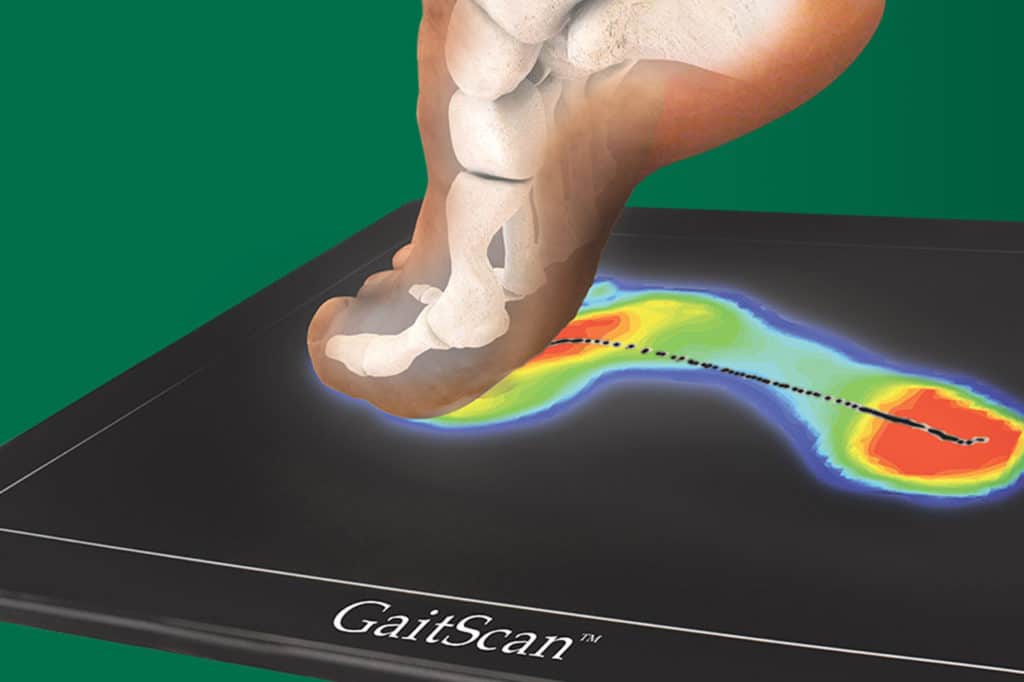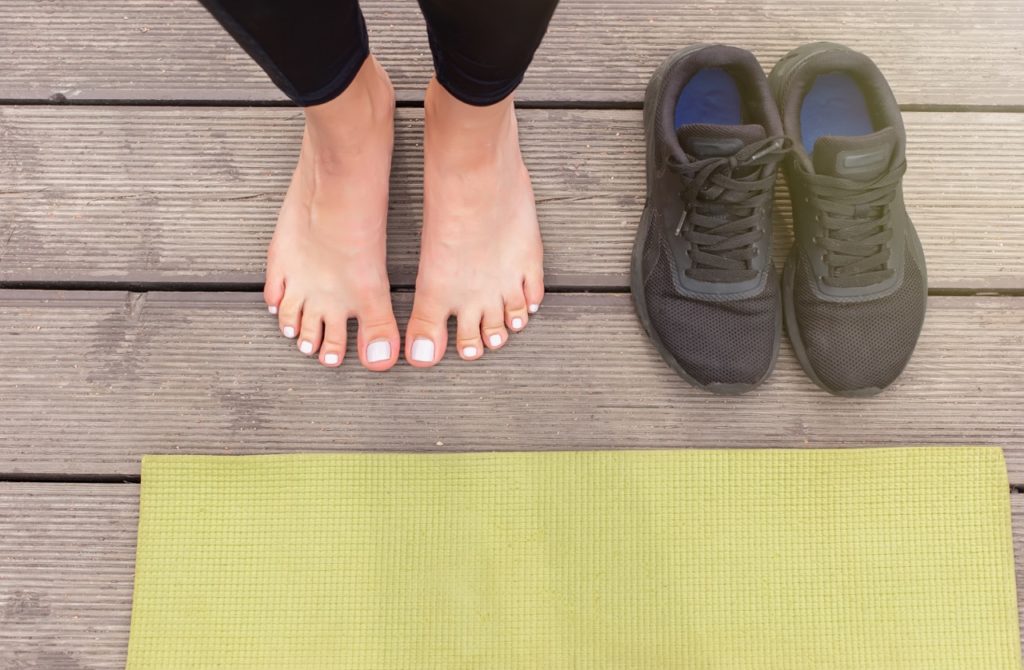What are orthotic insoles?
This is a question we are often asked!
Orthotic insoles are a medical device that is used to change and alter the position of the 26 bones within the foot. These bones consist of eight distinct types, including the tarsals, metatarsals, phalanges, cuneiforms, talus, navicular, and cuboid bones. These are held together with 26 different muscles along with tendons and ligaments. The foot, much like the hand, shares a similar structure. However, it is uniquely adapted to support more weight throughout a lifetime of standing, walking, and running.
Travel back 150 years, and reaching your 40s was a was a significant achievement. Today, we often anticipate living twice as long. Consequently, those 26 bones, ligaments, muscles and tendons all have to work harder for many, many more years. As a result, the wear and tear effect on the feet can lead to numerous foot and upper body medical problems. Bespoke insoles can be tailored to alleviate specific foot pain by making necessary adjustments to a base model.
A simple comparison are the foundations of a tall office block. If the foundations aren’t correctly aligned and stable, the upper floors will not be balanced, secure or safe. The human equivalent is the foot structural position or posture that links to the ankle, knee, hip, pelvis and spine, ensuring overall stability and alignment.
Orthotic Insoles are a medical device that, when accurately assessed, can support the foot and make specific changes to the 26 bones, muscles, ligaments and tendons to enable relief of numerous medical conditions.
What’s the difference between ‘custom’ or ‘off the shelf’ orthotics?
Custom orthotics are specifically designed and manufactured to address an individual’s unique foot shape, biomechanics, and needs. They are typically created using a 3D scan or cast of the foot, and are made from high-quality materials that provide optimal support and comfort. Custom orthotics are often prescribed by a healthcare professional, such as a podiatrist or orthopaedic specialist, to treat a range of foot and lower limb conditions, including plantar fasciitis, heel pain, and knee pain.
On the other hand, off-the-shelf orthotics are pre-fabricated and come in standard sizes. They are often less expensive than custom orthotics, but may not provide the same level of support and comfort. Off-the-shelf orthotics can be purchased over-the-counter at pharmacies, shoe stores, or online retailers and are often used to provide general foot support and relief from minor foot pain.
‘Off the shelf’ insoles are accepted as a reasonable option for a simple problem. But ‘custom’ orthotic insoles have numerous clinical advantages and flexibility to be manufactured to a higher standard of accuracy specifically for each person and their specific problems and challenges. This may be from getting up in the morning without heel pain, stopping bunion pain every time you walk or running a half marathon.
Custom orthotics insoles: a comprehensive overview
The established view is that ‘custom orthotics’ are used for more complex biomechanical foot problems and ‘off the shelf orthotics’ used for the more simple problems. But in my experience, all foot postural medial issues are better treated using custom foot orthotics because of the advanced technology used to scan and access the feet. Thorough examinations and precise measurements are crucial to create tailored orthotics that effectively address individual needs.
A simple comparison is between visiting the Optician for a comprehensive eye examination, which results in accurately prescribed spectacles, or picking up a pair of spectacles from a stand at the supermarket check-out.
QUESTION: which option will accurately treat your current medical conditions but also promote long-term eye or foot and body health?
Custom insoles are crafted based on a person’s specific needs, providing significant benefits for managing foot and lower limb ailments. Custom made orthotics are individualised and may incur additional expenses for refurbishment, with insurance coverage potentially making them more accessible.
Costs of custom orthotics
The cost of custom orthotics can vary depending on several factors, including the complexity of the design, the materials used, and the location of the healthcare provider. On average, custom orthotics can range in price from £150 to £600 or more per pair. Some healthcare providers may also charge additional fees for the initial assessment, gait analysis, and biomechanical assessment, which can range from £50 to £200.
It’s worth noting that while custom orthotics may seem expensive, they can provide long-term benefits and relief from chronic foot pain and other conditions. Additionally, many healthcare providers offer financing options or package deals that can make custom orthotics more affordable.
Insurance coverage and professional assessment
Insurance coverage for custom orthotics varies depending on the provider and the individual’s policy. Some insurance plans may cover part or all of the cost of custom orthotics, especially if they are deemed medically necessary. It’s essential to check with the insurance company to understand the extent of coverage and any requirements.
A professional assessment by a podiatrist, orthopaedic specialist, or sports medicine professional is usually required before purchasing custom orthotics. The assessment will evaluate an individual’s foot condition, biomechanics, and any specific needs they may have. The cost of the assessment will vary depending on the healthcare provider and location.
Value and long-term benefits
Custom orthotics can provide long-term benefits and relief from chronic foot pain and other conditions. By addressing the underlying biomechanical issues, custom orthotics can help to:
- Reduce pain and pressure on the feet, knees, and other joints
- Improve mobility and balance
- Prevent further damage and degeneration
- Enhance athletic performance
- Improve overall quality of life
While the initial cost of custom orthotics may seem high, the long-term benefits and relief from chronic pain can make them a worthwhile investment.
The process of getting custom orthotic insoles- what to expect, including gait analysis
This is a simple process – booking a biomechanical assessment appointment is all you need to do.
The assessment and scan will reveal interesting clinical factors, which you can clearly see and will be explained by the Podiatrist. We will explain what the scan and assessment have found and how custom orthotic insoles can be designed to change foot function and posture in order to relieve the presenting painful symptoms. The materials used for foot orthoses must balance rigidity and flexibility to support different activities and body types.
Please bring a selection of day-to-day footwear (including sports) to your appointment. This ensures the orthotic insoles are manufactured for you and to fit into your footwear choice. From slim ladies’ shoes to golf and running trainers – we can guarantee a match.
What happens during a biomechanical assessment and gait analysis, and what are the benefits?
During a biomechanics assessment, the healthcare professional will first gather information about the individual’s medical history, including previous injuries. A biomechanical assessment involves a series of physical tests and measurements to assess your posture, joint mobility, balance and muscle strength.

A biomechanical assessment involves gait analysis recordings such as range of motion assessments, muscle strength testing, and balance assessments. Gait analysis involves observing a person’s walking pattern to identify any foot abnormalities, or asymmetries. It also includes examining the foot posture, which is the arch position. Understanding the position of bones, muscles, ligaments and joints within the arch can be used to calculate the ‘foot posture index’ – a vital diagnostic tool.
Range-of-motion assessments measure joint flexibility and mobility, while muscle strength testing evaluates the strength of specific muscles in different positions. Balance assessments may involve standing on one leg or performing other tasks to assess an individual’s coordination and stability.
The Digital Gait Scan process is best described through this informative link:
Based on the results of these tests, the healthcare professional can identify any areas of concern and develop a treatment plan tailored to the individual’s needs. This leads to an orthotic insole prescription to treat your specific problems. Left and right orthotic insole will vary depending on the clinical anatomy and individual problems.
What are the benefits of a biomechanical assessment?
A biomechanical assessment can provide numerous benefits for individuals of all ages and activity levels. Some examples of potential benefits include:
- Injury prevention/core strength/fall prevention: by identifying any weaknesses or body imbalance. A biomechanical assessment can help prevent injuries from occurring.
- Pain relief: if you are experiencing pain or discomfort, a biomechanical assessment identifies the underlying cause that may be the source of chronic pain and enables targeted orthotic insole prescription to alleviate it. Proper foot support through orthotics can provide foot pain relief and improve overall foot function.
- Improved performance: through targeted exercises and interventions, orthotic insoles can help individuals improve their movement patterns and optimise their performance in sports or daily activities.
- Personalised treatment plan: a biomechanical assessment takes into account the individual’s unique body mechanics and movement patterns, allowing for a personalised treatment plan along with orthotic insoles to address specific needs. This can lead to more effective outcomes.
- Long-term benefits: a biomechanical assessment with prescription orthotics often can provide long-term benefits for an individual’s pain-free mobility and overall health and well-being.
Other problem areas biomechanical assessment and GaitScan can help:
There are other problem areas that a biomechanical assessment and gait analysis can help to identify and address. These include:
- Plantar fasciitis: is a condition that involves inflammation and pain of the tissue on the bottom of the heel and arch and is often caused by abnormal foot mechanics.
- Achilles tendonitis: overuse of the Achilles tendon can lead to inflammation and pain, which may be related to underlying biomechanical issues.
- Bunions: a biomechanical assessment can help identify why they have developed and ways to resolve pain.
- Ankle sprains: recurring ankle sprains may be related to underlying biomechanical issues, and a biomechanical assessment can help identify and address these issues.
- Shin splints: pain in the shins may be caused by overpronation or other biomechanical imbalances that can be identified through a biomechanical assessment.
- Knee pain: a biomechanical assessment can help identify and address knee pain by evaluating and correcting any biomechanical issues that may contribute to knee injuries and discomfort.
Conclusion: want to discover more about custom orthotic insoles?
Custom prescription orthotic insoles can significantly relieve foot pain and discomfort and improve balance. They can improve biomechanics and promote improved foot and performance function. Custom orthotic insoles can provide significant foot pain relief by addressing underlying biomechanical issues.
Custom orthotic insoles represent an investment in your future. The cost is £350.00 for a pair, but the true long-term benefits make them worthwhile investments to resolve your current problems with the reassurance of long-term improved foot function.
Interested in finding out more about orthotic insoles?
Contact Waverley Clinic today on 01252 716611 (7-day reception booking service)

